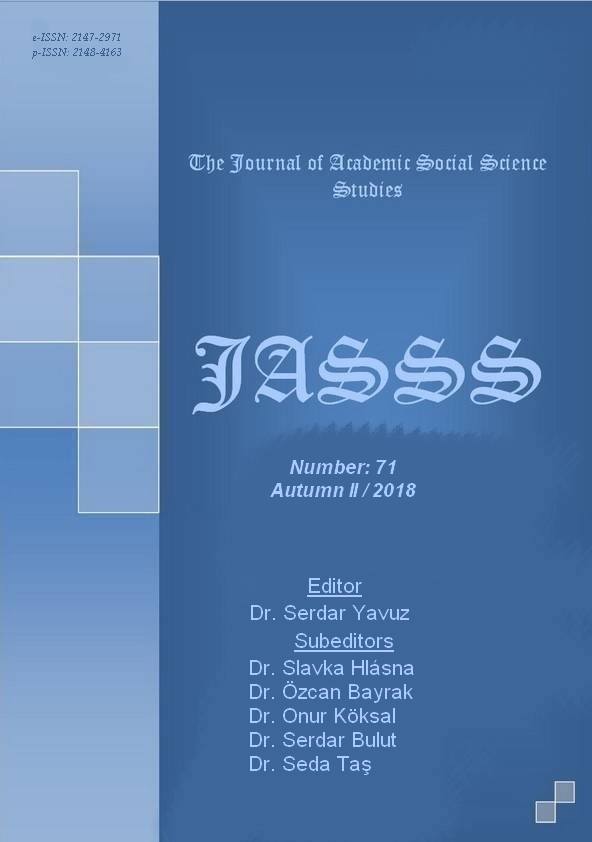Author :
Abstract
Estetik, salt bir güzel arayışı iken, sanat felsefesi hem güzeli, hem de çirkini içine almaktadır. Eco’ya göre çirkinin de bir estetik değeri vardır ve bu değer kıymetlidir. Mitolojik çağları temsil eden heykel ve resimlerde görülen canavar figürleri sanattaki çirkin kavramını içine almaktadır. Böylelikle ‘çirkinin mükemmel güzelliği’ kavramı sanatta kendine yer açmış ve beğeni kazanmıştır. Umberto Eco, bu durumu ‘sonsuzun estetiği’ olarak tanımlar ve hiç kimsenin çirkinlik olgusunun biçimsel incelemesi üzerinde durmadığına dikkat çeker. Bu yüzden güzellik olgusu yüzyıllar boyu klasik sanattın tek konusu olmuştur. Ta ki Avangart sanat anlayışındaki sanatın en önemli unsuru olan ‘estetik kaygı’ yani güzel kaygısı artık sanat yapıtının bir ölçütü olmaktan çıkarılıncaya kadar. Kübizm, Dadaizm, Neo-Dadaizm, Sürrealizm, Nihilizm ve Kitsch gibi reddedişsel eleştirel sanat akımlarıyla güzel arayışı yerini çirkinlik kavramına bırakmıştır. Sanat, bir yansıtma kuramı üzerine oturmaktadır. Ancak bu yansıtma doğada gördüğümüz güzelin birebir yansıtılması değil, yorumlanarak yeniden üretimidir. Dolayısıyla görünen gerçekliğin güzelliği, sanatta da güzel olmak zorunluluğu taşımamaktadır. Aynı şekilde doğada çirkin olan da sanatta güzel olabilmektedir. Güzel Sanatlar, her türlü biçimsel görselliği kapsayan salt bir kavramsal yapı değildir. Güzel sanatlar olarak tanımlanmış olgu kültürel çeşitliliğin ve zamansızlığın içinde yoğrulmuş bir yorum arayışıdır. Bu kavram bir güzellik arayışı değil, estetik bir yorum arayışıdır. Bu arayış güzelin tam karşıtı kaygılarla da gerçekleştirilebilir. Çirkinin güzel olarak algılanabilmesi sanatın yorum gücüdür. Oysa güzellik kadar çirkinlik de hayatın içindedir ve bize çok yakın bir olgudur. Çevremizdeki savaşlar, kavgalar, yoksulluk, şiddet, öfke ve nefret gibi duygular çirkinin birer yansımasıdır. Dolayısıyla, hayatın içinde var olan bu kavramlar sanatın alanına girmektedir. Umberto Eco’nun baş yapıtlarından biri olan ‘Çirkinliğin Tarihi’ isimli eserinin ışığında gerçekleştirilecek bu araştırma sanatın bir güzel arayışı olarak bilinen yaygın inanışının karşısında, çirkinin sanattaki temsilinin nasıl olduğuna ışık tutmayı amaçlamaktadır.
Keywords
Abstract
While aesthetic theory is a quest of a pure beauty, art philosophy is both beautiful and ugly. According to Eco, ugly has an aesthetic value and this value is precious. Monster figures seen in sculptures and paintings representing mythological ages encompass the idea of ugly in art. Therefore, the concept of 'perfect beauty of ugly’ has left its place in art and has gained acclaim. Umberto Eco defines this situation as ‘an aesthetic of eternity’, and notes that no one has ever focused on the formal examination of the phenomenon of ugliness before. Thus, beauty concept has opened up a working area for itself in art for centuries. Until the 'aesthetic anxiety or beautiful anxiety’ as the most important element of art in understanding of Avant-garde Art is removed, It is no longer a measurement for an art form. The quest of beauty throughout the critical art movements such as: Cubism, Dadaism, Neo-Dadaism, Surrealism, Nihilism and Kitsch have left its place to the notion of ugliness. Art is based on a theory of reflection, but this reflection is not always the reflection of the beauty we see in nature but the reproduction of the interpretation. So the beauty of real life does not have to be beautiful in art. In the same way, the ugly in nature can also be beautiful in art. Fine Arts is not just a conceptual structure that encompasses all kinds of formal visuality. The phenomenon, defined as fine arts, is a search for interpretation of cultural diversity and timelessness. This concept is not a search for beauty but an aesthetic and a search for a comment. This search can be carried out with worry in the exact opposite of the beauty. The art of perceiving ugly as beautiful depends on the power of interpretation of art. However, ugliness as well as beauty exists in life and it has close connections with people. The wars, conflicts, poverty, violence, anger, and haters are wrapping around us in everyday life and are a reflection of the ugly. These concepts that exist in life are natural themes of art field. This research, which will be carried out in the light of Umberto Eco's masterpiece 'History of Ugly History', will include a comprehensive literature search. This work aims to shed light on how the representation of the ugly in the face of the common belief, known as a beautiful quest of art. This work aims to shed light on how the representation of the ugly in art forms, opposite to common belief in art of beautiful quest.





